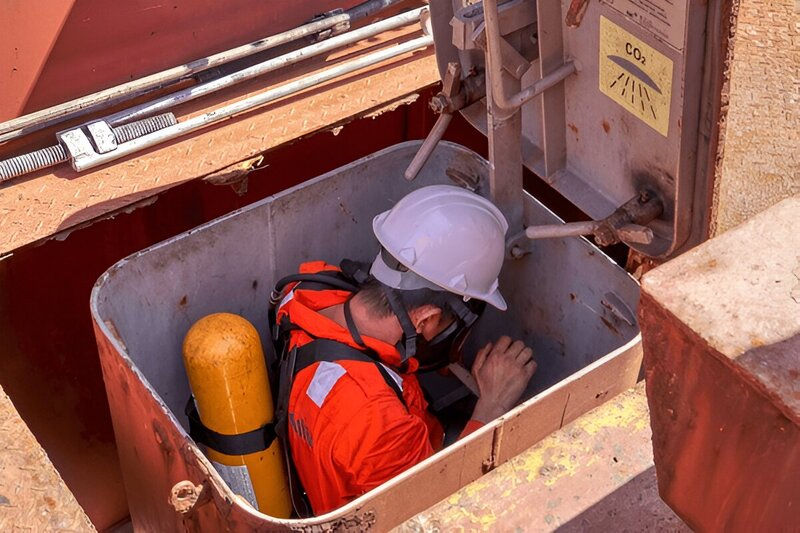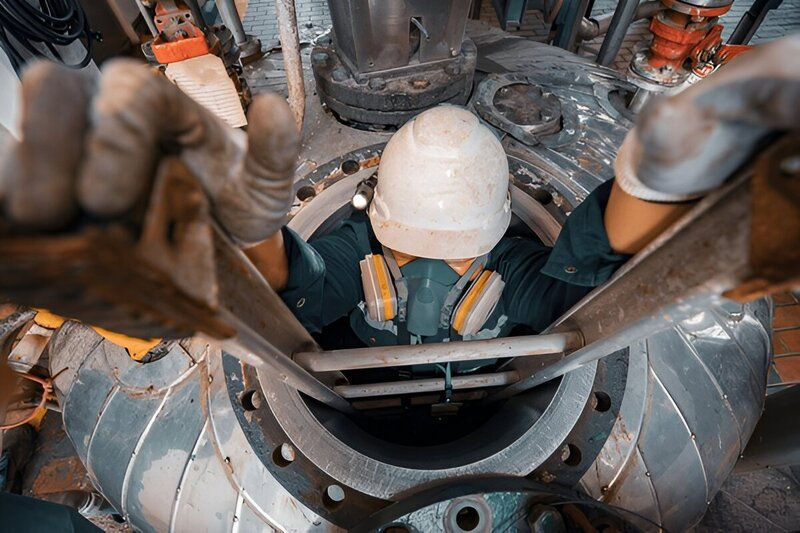Top Safety Innovations for RIIWHS202E Enter and Work in Confined Spaces
- Lara Buck
- Sep 24, 2025
- 5 min read

Safety training occupies a very significant place in contemporary workplaces, especially among industries in which employees work in high-risk settings day by day. One of the aforementioned conditions is working in weird, difficult, or constrained environments under serious hazards. Another hazard for one can be the confined entry or access to limited ventilation. It can also have toxic gases in it. To be able to face these hazards, the unit on entering and working in confined spaces has been made a cornerstone in compliant and safe operations, namely, riiwhs202e.
This article discusses innovation regarding safety in confined spaces and specified how great the innovations contribute to the enforcement of this important training unit.
Understanding RIIWHS202E Enter and Work in Confined Spaces
Riiwhs202e enter and work in confined spaces is the nationally recognized competency standard for Australia. It provides workers with the necessary skills and knowledge to perform safe entry, operation, and exit of confined spaces.
Key components include:
Identifying hazards and assessing risks before entry.
Using gas detection devices to test air quality.
Implementing appropriate risk control measures.
Wearing and maintaining personal protective equipment (PPE).
Following permit systems and emergency procedures.
The training course does not only specialize in the technical aspects of confined space entry but also creates a strong culture of safety. Trainees are encouraged to encourage teamwork, communication, and raised alertness while operating in high-risk environments.
Confined Space Safety Importance
Work carried out in confined spaces is associated with some of the worst injuries and fatalities at the workplace, as these places have inadequate ventilation, poisonous gases, or insufficient oxygen. Workers learn that deadly conditions most people underestimate are hidden dangers through the riiwhs202e enter and work in confined spaces training.
Major threats include:
Asphyxiation from lack of oxygen.
Contact with dangerous chemicals or fumes.
Physical entrapment from having very narrow spaces.
Fire or explosion hazard through flammable gases.
Integrating this into the latest safety innovations in this learning context better prepares workers to recognize and prevent these threats.
Modern Safety Innovations Supporting RIIWHS202E Enter and Work in Confined Spaces
Safety innovations have very much progressed to improve the outcome of the workforce operating in confined spaces. These exist in conjunction with the unit riiwhs202e enter and work in confined spaces to present a very solid set of parameters for protecting workers.
1. Advanced Gas Detection Technology
Gas detection has still been the major sector in confined space safety. These new detectors are now providing real-time data, wireless connectivity, and multi-gas monitoring. One team can find out the critical levels of oxygen, flammable gases, or toxic substances instantaneously. Also, with such a connection to mobile devices, a supervisor can monitor the conditions from anywhere.
2. Smart Personal Protective Equipment (PPE)
In PPE, research has also led to the advent of smart helmets or connected respirators along with wearable monitoring devices to track a worker's health metrics, such as heart rate and oxygen levels, then alert the user when conditions become hazardous.
3. Digital Permit-to-Work Systems
Most of the paper-based permits are slowly taking up the digital path. Workers trained under the course riiwhs202e entering and working in confined spaces are enjoying less complicated approvals, simpler compliance tracking, and quicker emergency responses due to digitized permits.
4. Remote Communication Tools
Visibility and verbal communication go hand in hand inside constrained spaces. Two-way radios and headsets specifically meant for these conditions allow entrants to be in constant contact with standby personnel in a reduced time span between response and an emergency.
5. Simulation Training and Virtual Reality (VR)
VR has become a major invention meant for safety training. Realistic confined space scenarios can now be experienced by workers, keeping them in a safe environment that reinforces skills learned from the riiwhs202e enter and work in confined spaces unit without a real hazard exposure.
Incorporating RIIWHS202E Enter and Work in Confined Spaces in Different Industries

The unit riiwhs202e enter and work in confined spaces pertains across an array of industries, with each having its own win set of hazards.
Construction: Requires entering pipelines, crawl spaces, or storage tanks.
Mining: Underground operations always require narrow spaces with low oxygen levels.
Manufacturing: Those confined environments are silos, vats, and ductwork.
Utilities: Inspecting and maintaining water tanks, sewer systems, and electrical vaults.
Thus, together with training, safety innovations guarantee that workers can negotiate through complex conditions.
Strengthening Risk Management with Training
Risk management sets the focus in the riiwhs202e enter and work in confined spaces course. The newest safety innovations complement training such that organizations can expect things to happen—horrific things—that will never happen again early, provided workers also understand the mistakes to avoid during RIIWHS202E enter and work in confined spaces.
Examples include:
Predictive analytics by sensor data to anticipate when conditions will become unsafe.
Automated alerts when hazardous gases are above the safe limit.
Immediate inspections using drones or robotic devices without risking worker exposure.
The risk management process is thus strengthened, making entering confined spaces more controlled and less hazardous.
Building Confidence through Training and Technology
Occupational safety takes a new dimension in modern terms with training. The construction space has an environment intended to be constructed for most workers. Psychological stress is one of the psychological barriers that workers might face in confined spaces. In a real situation, fear of entrapment or exposure to unseen dangers might keep a worker from making the best decisions.
To train the enter and work in confined spaces course riiwhs202e about the more current training technologies such as VR simulations, thus allowing workers to feel more capable of responding correctly. Experience in working with safety technology has built this self-confidence, resulting in prepared and empowered workers.
Emergency Response Preparedness
An emergency within a confined space can develop very quickly, hence an immediate and effective response to rescue is critical. The riiwhs202e enter and work in confined spaces unit places emphasis on rescue procedures, and safety innovations further support this.
Some modern tools available for emergency response include
Rope rescue apparatus for confined space.
Portable ventilation to assist with air quality.
Narrow stretchers for narrow areas.
Real-time location tracking to find workers in an emergency.
This innovation enables trained teams to respond faster and more efficiently to reduce injury and save lives.
Benefits of Training and Innovation into the Future
Both employers and employees stand to gain long-term advantages when modern technology merges with training in riiwhs202e enter and work in confined spaces.
For employers, fewer accidents result in reduction in insurance costs, greater compliance, and increased image.
For workers, such training increases career resilience against the future inevitable industry transitions because skills tend to be portable from one industry to another.
Safer workplaces will thus have much reduced consequences for accidents in homes and society.
As industries continue changing, what remains constant is that once work is done in confined spaces, it is absolutely an unsafe place.
Conclusion
Confined space work by all means is an unsafe area; however, through a more organized way of training and the acceptance of new innovations, such hazards may be dealt with. Workers trained in the riiwhs202e enter and work in confined spaces unit are well prepared in identifying hazards, properly using the equipment, and taking necessary action when facing emergencies.
When this course is incorporated with the attendant cutting-edge technologies-from gas detection to virtual training simulations-it doesn't merely tick compliance boxes; it takes the safety of workplaces to the next level. Through investment into training and innovation, risk can be minimized and lives safeguarded. Thus, a safer future is created for workers, employers, and society.
In short, the combination of riiwhs202e enter and work in confined space course and modern safety innovations is very important for all industries to always maintain high levels of safety and compliance readiness.






Comments